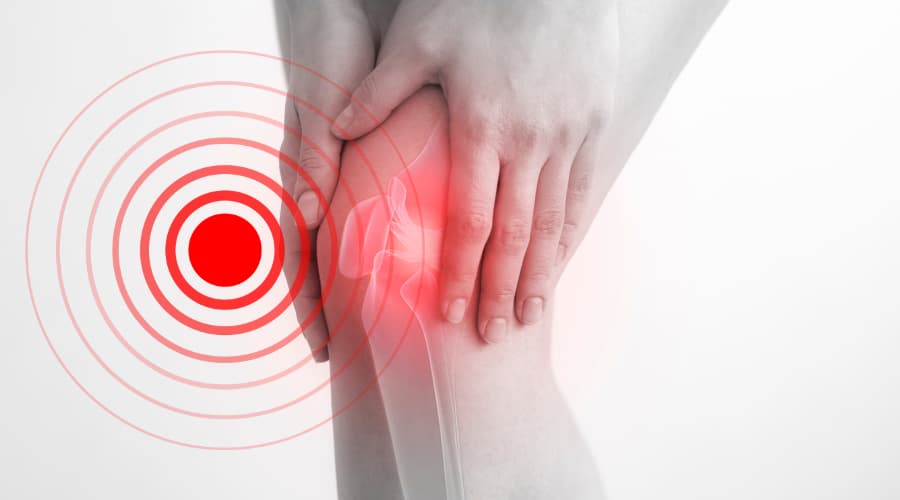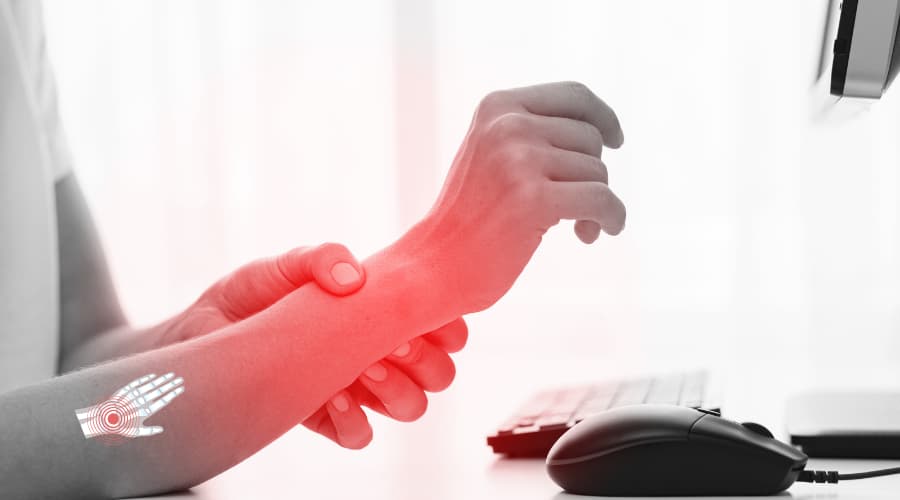Chiropractors and physical therapists are easy to confuse with one another. Both professions specialise in healing issues with the body that impedes movement or limit functionality. This can range from broken bones preventing people from walking or using their arms, to things that affect like Parkinson’s disease and fibromyalgia. While their goals are similar, the way they’re approached is based on two different backgrounds of medicine. Chiropractors are considered a form of alternative medicine, which often means that their techniques originate in some form of intuition rather than evidence-based medicine. Physiotherapists adhere to techniques recommended by scientific consensus: exercise therapy, cryotherapy, TENS and heat therapy. What modality they use depends on each individual patient’s needs to maintain optimal use of their bodies.
The lines have blurred in recent years. Some chiropractors focus on spinal manipulation therapy to solve any problems their patients have, while others have begun involving other treatment options as potential solutions. The same has happened for evidence-based medicine practitioners. With more research delving into the benefits and possible effects of chiropractor practice, physiotherapists become more interested in utilising it as a possible treatment.
Despite this overlap, there’s still distance between chiropractors and physiotherapists. The two sides frequently disagree on which perspective on medicine is most effective at helping patients. Even though they share some techniques, others remain within their relative groups. For example, chiropractors often use spinal manipulation therapy to treat neck pain. Physiotherapists are willing to treat some forms of back pain with chiropractic treatment but not neck pain, due to possible outcomes of the treatment.
In contrast, since physiotherapists follow scientific consensus, it makes sense that their techniques would always be better than chiropractic techniques. This isn’t always true. Certain forms of physiotherapy, particularly if they involve electric stimuli, have minimal positive effects as forms of treatment. Physiotherapists still have a larger variety of options available even if you compare them to chiropractors that use physiotherapeutic techniques, but chiropractor practice may show benefits for certain types of pain. Research helps distinguish which cases these two forms of medicine are preferred.
Chiropractors
Chiropractors originated in 1895 when Daniel David Palmer claimed to have cured a person of deafness by manipulating their neck. This belief has been the basis of the entire field of study, that spinal misalignment’s can cause disturbances in the body that emanate to other areas unrelated to the spine. These disturbances, called subluxations, interferes with the nervous systems ability to function optimally. A dysfunctional nervous system is believed to have a domino effect that ends with other forms of dysfunction in the body: anything from autism to fevers. With the spine being the primary hub of the nervous system, correcting misalignment’s should correct everything else. A 2009 study published in Chiropractic and Manual Therapies found that chiropractic subluxation didn’t have any supportive evidence. This has lead to a schism within the chiropractic community. Some practitioners continue believing that solving subluxations are at the core of their practice. Others have seen that some research contradicts their beliefs and adapted to the new findings.
In 2014 the American Heart Association released a statement on cervical arterial dissections and how spinal manipulation therapy can affect it. Arterial dissections are tears within the inner lining of the artery. Blood collects in the tear and this collection hinders blood flow through the body. Clots can also form due to arterial tears, which can further slow or stop blood flow or cause the clot to travel to the brain. They didn’t find a causal link between SMT and arterial dissections but mentioned that clinical reports imply that mechanical forces can aid in causing a cervical arterial dissection. CD can then lead to a stroke, either abruptly or as a build-up of trauma over time. Case reports the AHA included in their statement mention that patients that went to a chiropractor were more likely to experience CD than their control group. Despite a lack of definitive, causal evidence, the AHA recommends chiropractors taking this possibility in consideration during their practice. Its relatively uncommon for people to die after chiropractic care, and whether it’s the spinal manipulation or whatever pain led the individual to the Chiropractic is uncertain.
Death is always a possibility with any form of treatment in medicine. Prescription drugs are known to have numerous possible but rare side effects that can injure patients. Medical practitioners aim to minimise negative effects while appropriately handling ailments. If the possible negatives outweigh the benefit, then people practising evidence-based medicine would avoid it. Since there are alternatives to chiropractic care for solving neck pain, it’s avoided by physiotherapists and some chiropractic practitioners.
Since Chiropractory is believed to affect the nervous system, and the nervous system sends pain responses to the brain, then they could attribute any form of pain or disability to a disruption in the spine that needs an adjustment.
Physiotherapy
Physical therapists are as the name describes: they provide therapy for your physical body. Since body therapy is an extremely broad topic, ranging from athletes wanting to reach their maximum performance to people relearning how to walk, there’s numerous approaches used depending on what problems patients arrive at physiotherapists with.
Most physical therapists work under a few different specialities. Orthopaedic Physical therapists handle issues with the musculoskeletal system and surgeries used to treat these issues. To this end, they may prescribe strength training, heat or cold packs, or a form of electrical stimulation. People might need to see an Orthopaedist after a sports-related injury, after an operation on one of their joints, carpal tunnel, amputations, arthritis, bone fractures, sprains, and similar conditions.
Neurological physical therapists handle people’s neurological disorders and diseases that can affect their quality of life. things like Lou Gehrig’s disease, spinal cord and brain injuries, multiple sclerosis, Parkinson’s, and stroke. Since our nervous system controls our ability to move our body, common issues people report to these physical therapists for are difficulties with walking and gait, eyesight problems, paralysis, or brain injuries.
Cardiac and Pulmonary physiotherapists focus on the heart’s ability to pump blood through the body and anything hindering it. Anyone with a form of heart disease, high blood pressure, or high cholesterol may see Cardiovascular physiotherapists for help. People typically see them after a cardiac event has already happened, like a heart attack. In this case they specialise in rehabilitation to improve endurance and cardiovascular function.
Paediatricians are physical therapists that deal with children. They’re a crucial form of physiotherapy since they diagnose and treat health problems in infants, children, and adolescents early on before their conditions worsen. Children with delayed development, cerebral palsy or torticollis are often treated by paediatricians.
Geriatrics deal with the opposite of paediatricians. As our bodies age, dozens of different bodily processes, inherited diseases, or lifestyle decisions begin taking a toll, and can affect our quality of life. Geriatrics handle problems commonly associated with ageing. These include Alzheimer’s disease, osteoporosis, cancer, arthritis, and cardiovascular rehabilitation or neurological issues related to growing old.
Some of physiotherapist’s specialisations and tools intersect. Despite having a particular focal point, all of them share similar ways of aiding patients. The typical modalities physiotherapists include heat therapy, cryotherapy, ultrasound, TENS, electric stimulation, and light therapy. Heat therapy relaxes muscle tension and can aid in circulation while cryotherapy reduces inflammation and restricts blood flow. Ultrasound machines emit high or low-frequency sound waves that bore into your muscles to help tissue relax. Similar to heat therapy, its useful for treating muscle spasms and overall muscle tightness. Phonophoresis is similar but uses ultrasound and TENS is an acronym meaning transcutaneous electrical nerve stimulation and can help reduce pain. This is different from general electrical stimulation, which improves muscle strength by forcing them to contract.
Given the variety of treatments physiotherapists can use, they’re often recommended for lower back pain. Research has shown that different methods physiotherapists use are capable of reducing back-related pain. When compared to spinal manipulation, a systematic review of the literature found no statistically significant difference between exercise therapy compared to spine manipulation therapy for short-term and long-term results.
Conclusion
There are lessons learned from both fields of study. Physiotherapy provides a greater variety of options for patients with disability or pain that limits their body’s movement. Chiropractors readjusts the spine in order to fix various issues in their body. Choosing the right one for you depends on your medical diagnosis and treatment plan.
Related Resources:
- Chiropractor or Osteopath: What Do I Need?
- Benefits of Chiropractic Care for seniors
- Deep Tissue Massage & Sports Massage Information
- Managing your Back Pain
- Chiropractic Care for Back Pain Reduces Medical Disability




